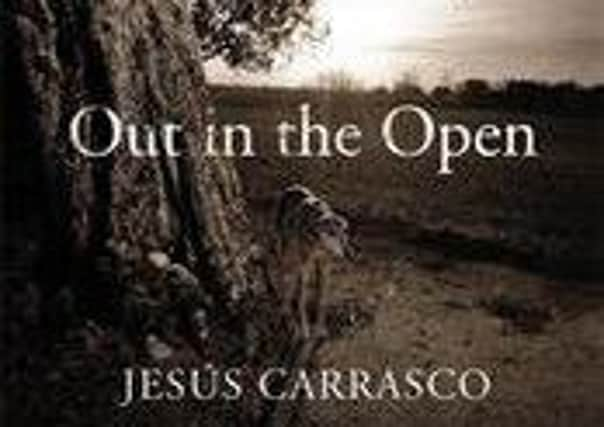Book review: Out in the Open by Jesus Carrasco


Out in the Open
By Jesus Carrasco
Harvill Secker, 184pp, £12.99
From inside his hole in the ground, he heard the sound of voices calling his name, and, as if they were crickets, he tried to pinpoint the precise location of each man within the bounds of the olive grove.” This is the opening of a prize-winning Spanish novel. The fugitive is a boy, of uncertain age. We don’t know why he is hiding – Jesus Carrasco thrusts us into a story already well-advanced – but his fear and determination suggest he is escaping ill-treatment, cruelty, sexual abuse. He thinks of his “fawning, revile father” hunting for him in the company of the bailiff – even the absence of whose voice frightens him. When, eventually, he thinks it safe to leave his hiding-place, he sets off across an arid plain, a country suffering a prolonged drought, a wasteland where houses and villages are deserted. He thinks that if he wanders far enough, he “would have learned enough about himself and the earth for the bailiff never to have him in his power again”, and he wonders “if he would ever be capable of forgiving”.
The journey in that dead land is too much for him. He is weak and in danger of dying of exhaustion and thirst when he comes upon a very old man, a goatherd, travelling with his donkey, dog and the goats which he milks every night. Hesitantly and fearfully, he attaches himself to this Bible-reading old man of few words. Will he prove his protector as well as his teacher?
Advertisement
Hide AdThe novel is a chase, for the boy is in danger from his pursuers, chief among them the bailiff with his motor bike and the sidecar in which the boy has often had to ride concealed. It is also a quest as the boy seeks freedom and the opportunity to learn about himself and the world, and an education in the practical realities of the world which the old goatherd can impart to him. Uncertainty creates tension. There are moments when the boy fears that even the goatherd may betray him. An abused child has difficulty in learning to trust.
Carrasco writes with an admirable precision, a zest for detail and a mastery of tone. Sometimes the vivid imagery ascribed to the boy’s train of thought seems more credibly to belong to the author than to the character he has created, but this is a venial fault in a novel in which the aridity of the drought-ravaged landscape accords to completely and satisfyingly with the damage done to the boy by the violence he has suffered.
The first part of the novel is very slow, and this is necessary to establish both the tone and the isolation of the boy and the old goatherd in the barren country. The second half is full of incident, much of it horrible as it approaches the climax, and the question first of what the boy has to do if he is to survive, and, second, whether he can indeed do so. Yet there is tenderness too, in the developing intimacy and inter-dependency of the boy and the old man.
Many readers will, I suspect, find this novel easier to admire than to enjoy. It demands persistence and in parts a strong stomach. If, for instance, you don’t want to know how to butcher a dead sheep, first hauling out its intestines, there are pages you would be well-advised to skip; there are also descriptions of bodily functions which some will find distasteful. Yet it is undeniably impressive and compelling because everything is everywhere so thoroughly and keenly imagined and realised. Moreover, if some of the early parts of the narrative seem to ramble as slowly and uncertainly as the boy himself in his journey with no goal in sight, the last section is intensely dramatic.
One can imagine that the novel, which has been a best-seller in Spain, is likely to be filmed, and indeed the precision of the writing and the vividness with which the landscape, mood and narrative are presented seem to invite a film treatment. Yet at the same time, film might not catch the moral complexity of Carrasco’s treatment of the boy’s developing understanding of who he is and what the world around him might be.
The translation is by Margaret Jull Costa and seems to be up to the high standard expected of the translator of Javier Marias and Joe Saramago. She is indeed such a distinguished translator that one expects any Spanish or Portuguese novel rendered into English by her to be of the finest quality; and this one is no exception.
FOLLOW US
SCOTSMAN TABLET AND MOBILE APPS